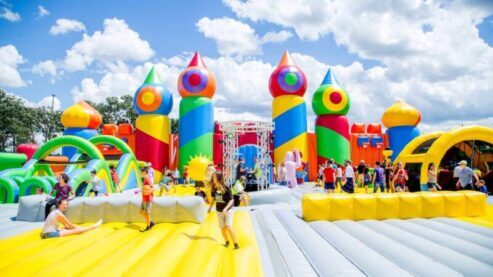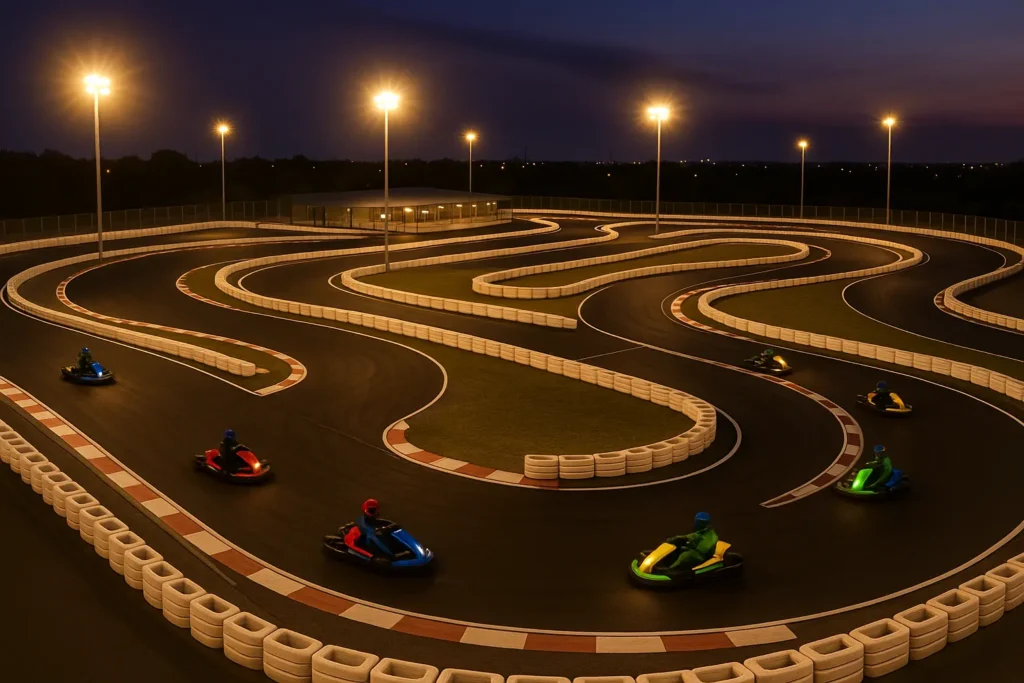The Difference Between Inflatable Parks and Trampoline Parks: A Comprehensive Comparison.Recreational and fitness activities have seen a tremendous surge in popularity in recent years, and two prominent players in this arena are inflatable parks and trampoline parks. These entertainment destinations offer exhilarating experiences suitable for individuals of all ages. At first glance, they may appear similar, but there are significant differences between inflatable parks and trampoline parks. In this comprehensive blog post, we will delve into these distinctions, helping you make an informed choice for your next adventure or business venture.
Part 1: Unpacking Inflatable Parks
What are Inflatable Parks?
Inflatable parks, also known as “bounce parks” or “jump parks,” are recreational facilities designed for indoor or outdoor use. They are characterized by a plethora of inflatable structures and obstacles, typically made from durable materials and inflated using blowers. These structures create a bouncy, safe, and entertaining environment for visitors.
Key Features of Inflatable Parks:
- Inflatable slides, obstacle courses, bounce houses, and more.
- Appeal to individuals of all ages.
- Typically associated with entertainment and family fun.
- Commonly found in amusement parks, indoor play centers, and outdoor events.
Part 2: Trampoline Parks in Detail
What are Trampoline Parks?
Trampoline parks are indoor facilities where wall-to-wall trampolines take center stage. These parks often feature foam pits, dodgeball courts, and various gymnastic and acrobatic elements. Visitors can bounce, flip, and perform tricks on interconnected trampolines, providing an exhilarating and physically demanding experience.
Key Features of Trampoline Parks:
- Wall-to-wall trampolines, foam pits, dodgeball courts, and more.
- Attract a primarily teenage and adult demographic.
- Emphasize physical fitness, exercise, and skill development.
- Commonly found as standalone facilities or within larger entertainment complexes.
Part 3: Activities and Experiences
Inflatable Parks: Bouncing into Fun
Activities and Experiences:
- Bouncing on inflatable structures.
- Sliding down inflatable slides.
- Navigating obstacle courses.
- Jumping into ball pits.
- Suited for individuals, families, and children’s parties.
Experience Focus:
- Casual entertainment and enjoyment.
- Suitable for all skill levels.
- Less emphasis on structured activities.
- Ideal for birthday parties and gatherings.
Trampoline Parks: Flying High with Skill
Activities and Experiences:
- Bouncing, jumping, and flipping on trampolines.
- Practicing gymnastics and acrobatics.
- Playing dodgeball or basketball on trampolines.
- Participating in fitness classes.
- Catering to freestyle and skill-oriented activities.
Experience Focus:
- Physical fitness and exercise.
- Skill development and improvement.
- Structured activities and classes.
- Suitable for those seeking a workout or skill advancement.
Part 4: Identifying the Target Audience
Inflatable Parks: Fun for the Whole Family
Target Audience:
- Families with children.
- Groups hosting birthday parties.
- Casual thrill-seekers of all ages.
- Individuals seeking leisure and entertainment.
Trampoline Parks: Teenagers and Beyond
Target Audience:
- Teenagers and young adults.
- Fitness enthusiasts.
- Athletes training in gymnastics or acrobatics.
- Individuals looking for a physically challenging experience.
Part 5: Safety Considerations
Inflatable Parks: Safe Bouncing
Safety Measures:
- Trained staff supervising play areas.
- Soft, inflatable surfaces reduce the risk of injury.
- Age and size restrictions on certain attractions.
- Rules and guidelines for safe play.
Trampoline Parks: Safety First
Safety Measures:
- Trained staff overseeing jumpers.
- Foam pits and safety padding around trampolines.
- Strict adherence to safety rules, including no double bouncing.
- Age and size restrictions on certain activities.
Part 6: Physical Benefits
Inflatable Parks: Moderate Activity
Physical Benefits:
- Moderate physical activity and calorie burn.
- Improved balance and coordination.
- Cardiovascular benefits from continuous movement.
- Stress relief and enjoyment.
Trampoline Parks: Serious Exercise
Physical Benefits:
- Intense cardiovascular workout.
- Enhanced muscle tone and strength.
- Improved agility and body awareness.
- Stress relief and endorphin release.
Part 7: Business Considerations
Inflatable Parks: Entertainment Focus
Business Model:
- Primarily focused on entertainment and recreation.
- Attracts a broad customer base, including families.
- Suitable for event rentals and party bookings.
- Seasonal outdoor options available.
Trampoline Parks: Fitness and Entertainment
Business Model:
- Often marketed as fitness and entertainment centers.
- Targeted at a more specific demographic.
- May offer fitness classes and memberships.
- Typically indoor facilities, open year-round.

Conclusion: Choosing Your Adventure
Inflatable parks and trampoline parks may share some similarities, but they cater to different audiences and offer distinct experiences. Inflatable parks prioritize entertainment and casual enjoyment, making them ideal for family outings and social gatherings. Trampoline parks, on the other hand, focus on physical fitness, skill development, and structured activities, appealing to teenagers, young adults, and fitness enthusiasts.
Your choice between inflatable parks and trampoline parks should align with your interests, fitness goals, and the type of experience you seek. Whether you opt for the buoyant bounce of an inflatable park or the acrobatic challenges of a trampoline park, both offer unique opportunities for enjoyment and physical activity. Ultimately, the decision depends on your age, fitness level, interests, and the kind of adventure you’re looking for.
In the end, whether you’re soaring through the air in a trampoline park or bouncing off inflatable structures in a bounce park, these recreational destinations promise excitement, fun, and a memorable time for all. So, go ahead, make your choice, and embark on your next adventure, knowing you’re making an informed decision based on the differences between inflatable parks and trampoline parks.





